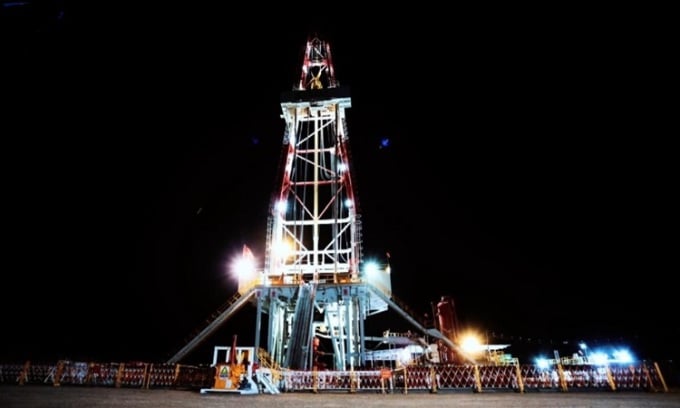Smart drilling technology accurately detects underground oil and gas in the Tarim Basin and guides the drill bit to the best extraction point, increasing production fivefold.

Oil and gas well in Xinjiang Autonomous Region, China. Photo: CMG
The Chinese Academy of Sciences (CAS) reported the results of a production test conducted in early August. The TP259-2H well in the western part of the Tarim Basin reportedly produced 13.5 tonnes of oil and 42,000 cubic metres of natural gas per day, five times the output of neighboring wells. The project, led by Zhu Rixiang and Di Qingyun from CAS, was a joint effort with the Northwest Oilfield Exploration and Development Research Institute and Sinopec Zhongyuan Petroleum Engineering Company, according to SCMP .
The Cretaceous oil and gas reserves in the Tarim Basin are at depths of more than 4,000 m and are distributed in a complex and uneven manner. They are separated in a layered cake-like structure, in which the interlayers are only 2-5 m thick but have a diverse depth, up to more than 10 m. Traditional drilling techniques are limited in exploiting this resource.
The team used intelligent algorithms to develop a 3D geological model with meter-level resolution, including structure, rock characteristics, and composition. This model allowed them to pre-position drilling targets, design horizontal wells, and predict the geological structure and amount of accessible oil and gas.
The intelligent drilling system guided by 3D target positioning technology acts as the "brain" and uses various devices like "eyes" and "legs", coordinating to accurately complete the task. The electromagnetic wave-based camera on the drill bit is like a pair of eyes. The device transmits electromagnetic waves into the strata and receives the transmitted signals to explore the characteristics and boundaries of the rock layer.
During the July drilling operation, the system worked continuously for 229 hours at a depth of 4,538 m, accurately identifying structures such as sand pockets and providing critical information for decision making. 3D positioning technology uses a model of the underground oil and gas structure to guide the drill bit to the best extraction point. A flexible rotating guide system and a geophysical positioning system then guide the drill bit to the designated target.
According to CAS, the project began in 2017 and is the result of the efforts of hundreds of researchers over six years.
An Khang (According to SCMP )
Source link

































































































Comment (0)